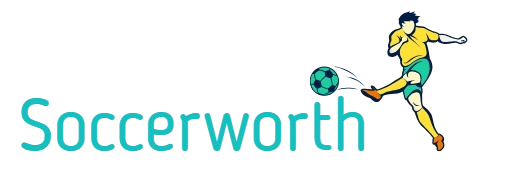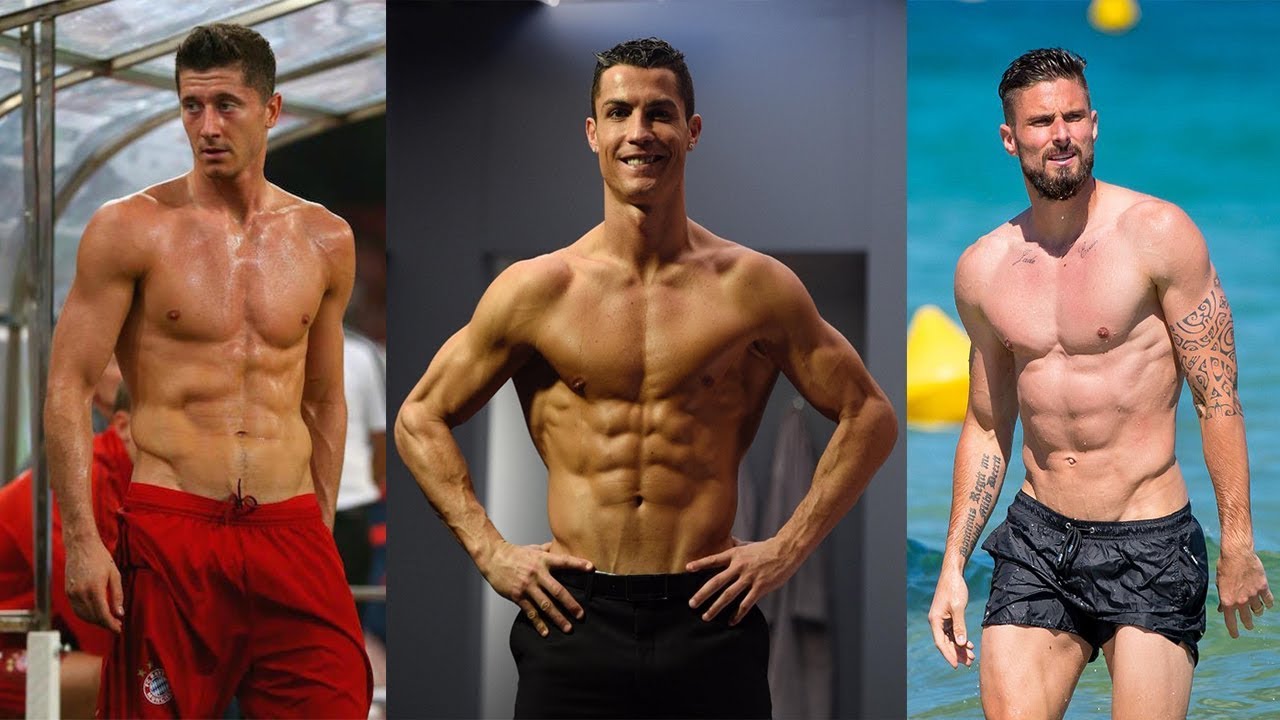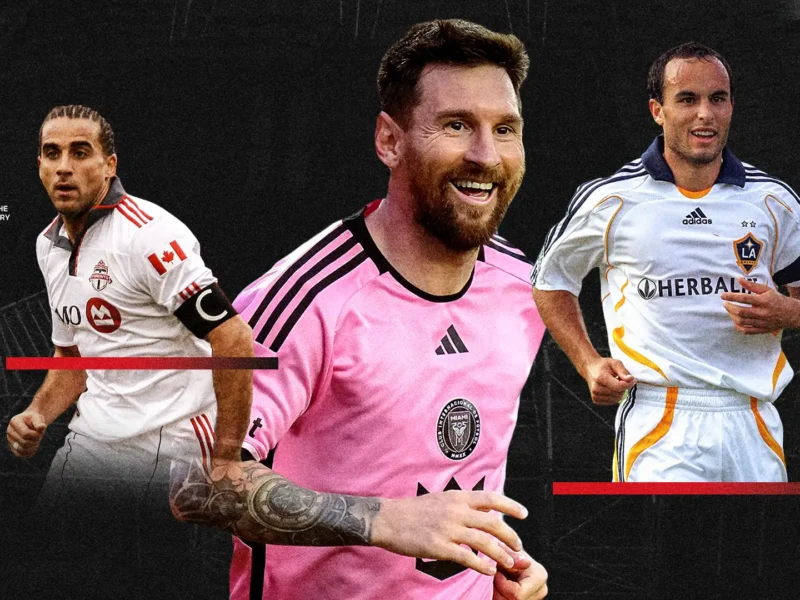Unlike basketball, where height is a huge advantage, or American football where pure size can win the day, soccer is a sport that welcomes players of all body types and dimensions.
Whether you’re tall and lanky or short and stocky or somewhere in between, there’s a place for you on the pitch.
But at an elite level, some body types appear to thrive in certain positions. That doesn’t mean a 5’5” player can’t be a world-class center back or that a 6’4” striker can’t be a blur—it just means that builds have built-in advantages and disadvantages.
In this guide, we’re going to go over the three general body types in soccer, the positions that might best fit with them, and how players can maximize their strengths, whatever their physical frame.
The Three Main Body Types in Soccer
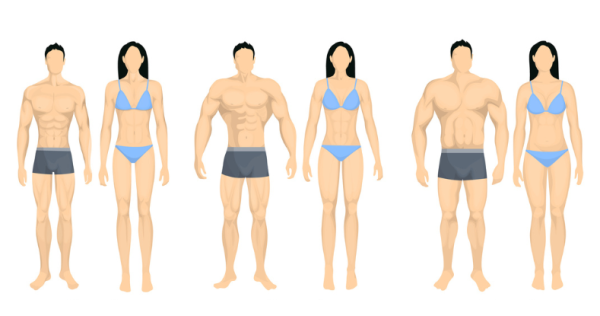
Most soccer players fall into one of three body type categories:
- Ectomorphs – Lean, long-limbed, naturally low body fat
- Endomorphs – Stocky, strong, gains muscle (and fat) easily
- Mesomorphs – Naturally muscular, athletic, balanced build
Let’s look into each one.
CHECK OUT | 13 Simple Ways to Prevent Blisters When Wearing Soccer Cleats
1. Ectomorphs: The Lean, Agile Players
Ectomorphs are sometimes called “hard gainers” because they struggle to gain and keep muscle.
Ectomorphs typically are very tall, thin with small joints with small bones and delicate features. This somatotype typically has a rapid metabolism, and that is difficult to put on Weight or muscle.
Ectomorphs tend to enjoy more endurance-type activities like running and swimming, as opposed to weights and power sports, as hyperactivity levels are typically quite high in ectomorphs.
They are distinguished by a wide complexion, a narrow waist, large shoulders, and symmetrical body structure.
This naturally grants mesomorphs a certain level of strength, making engagement in different types of physical activity easy.
Traits:
- Slender frame
- Long limbs
- Low body fat
- Fast metabolism (hard to gain weight)
- Naturally high endurance
Best Positions:
- Wingers (rely on speed and agility)
- Attacking midfielders (need quick bursts and endurance)
- Full-backs (require stamina to overlap and defend)
Challenges:
- Struggles with physical duels
- May lack raw strength
- Harder to hold off defenders
Famous Ectomorphs:
- Lionel Messi (5’7”) – Despite his small frame, his low center of gravity makes him unstoppable.
- N’Golo Kanté (5’6”) – His endless energy and agility make him a defensive powerhouse.
- Phil Foden (5’7”) – Quick, agile, and technically brilliant in tight spaces.
Training Tips for Ectomorphs:
- Focus on explosive speed drills (sprints, agility ladders).
- Incorporate strength training to improve physicality (squats, deadlifts).
- Eat a high-protein diet to support muscle growth.
2. Endomorphs: The Strong, Powerful Players
Endomorphs are characterized by larger bones than other body types, with natural strength and muscularity requiring less effort.
Their shorter limbs and thicker waists, as well as their wide hips, can make aerobic activities harder for them to do.
There is nothing wrong with being an endomorph; one’s body type does not make them any less capable than the next person, it simply means that one must tailor their fitness program according to their individual needs
Traits:
- Stocky build
- Naturally strong
- Gains muscle (and fat) easily
- Shorter limbs, thicker torso
Best Positions:
- Defensive midfielders (need strength to break up play)
- Center-backs (require physicality in duels)
- Target strikers (hold-up play, shielding the ball)
Challenges:
- May lack top-end speed
- Can tire quicker in endurance-based roles
- Needs strict diet to stay lean
Famous Endomorphs:
- Sergio Agüero (5’8”) – Compact, powerful, and lethal in the box.
- Paul Pogba (6’3”) – Combines strength with technical skill.
- Gennaro Gattuso (5’10”) – A relentless ball-winner who thrived on physicality.
Training Tips for Endomorphs:
- High-intensity interval training (HIIT) to improve stamina.
- Strength and conditioning to maintain power without excess bulk.
- Flexibility work (yoga, dynamic stretching) to stay agile.
CHECK OUT | Why Do Soccer Players Wear Shin Guards?
3. Mesomorphs: The Naturally Athletic Players
Mesomorphs find it easier to develop muscle than other body types; they tend to put on muscle more quickly and adapt to exercises rapidly.
If their training includes lots of core strengthening work, like pilates or yoga, they also have nice posture.
With careful training and good nutrition, mesomorphs can remain lean and have a lot of muscle – which isn’t always the case for the other body types like ectomorphs or endomorphs.
Sometimes, a rounder body type is referred to as an endomorph, which normally has larger amounts of body fat and a tendency toward inactivity.
Traits:
- Broad shoulders, narrow waist
- Naturally muscular
- Gains and loses weight easily
- High energy levels
Best Positions:
- Strikers (explosive power for finishing)
- Box-to-box midfielders (endurance + strength)
- Full-backs (speed + defensive strength)
Challenges:
- Can become too bulky if over-trained
- Needs balance between strength and agility
Famous Mesomorphs:
- Cristiano Ronaldo (6’2”) – The perfect blend of speed, power, and leaping ability.
- Virgil van Dijk (6’4”) – Dominates physically while remaining mobile.
- Erling Haaland (6’5”) – A powerhouse with frightening speed for his size.
Training Tips for Mesomorphs:
- Plyometrics for explosive power (box jumps, sprints).
- Functional strength training (kettlebell swings, resistance bands).
- Sport-specific drills to refine technical skills.
Which Body Type is Best for Soccer?
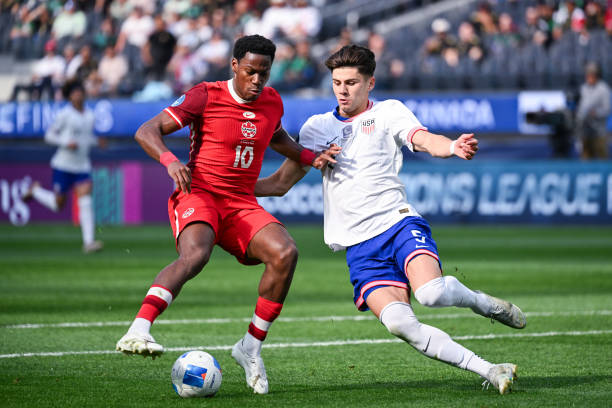
The truth? There’s no single “best” body type.
- Ectomorphs excel in speed and endurance roles.
- Endomorphs dominate in physical battles.
- Mesomorphs have the ideal balance for all-around play.
Studies show most elite players are mesomorphs or ectomorphs, but there are exceptions in every position.
CHECK OUT | Best Soccer Speed of Play Drills: Boost Your Skills
Body Types by Position
Goalkeepers (Usually Mesomorphs or Endomorphs)
- Average height: 6’2”+ (men), 5’10”+ (women)
- Key traits: Reach, reflexes, strength in aerial duels
- Examples: Alisson Becker (6’3”), Manuel Neuer (6’4”)
Defenders (Mostly Mesomorphs & Endomorphs)
- Center-backs: Tall, strong (Van Dijk, Sergio Ramos)
- Full-backs: Leaner, faster (Trent Alexander-Arnold, Achraf Hakimi)
Midfielders (Mix of All Types)
- Defensive mids: Stocky, strong (Casemiro, Rodri)
- Playmakers: Lean, agile (Luka Modrić, Kevin De Bruyne)
Wingers & Strikers (Ectomorphs & Mesomorphs)
- Pacey wingers: Lean, explosive (Kylian Mbappé, Vinícius Jr.)
- Target strikers: Strong, tall (Olivier Giroud, Robert Lewandowski)
Can You Change Your Body Type?
Not entirely—your bone structure and metabolism are largely genetic. But you can optimize your physique for soccer:
- Ectomorphs can add muscle with strength training.
- Endomorphs can improve speed and endurance with HIIT.
- Mesomorphs must balance bulk with agility.
Example:
- Cristiano Ronaldo started as a skinny winger (ectomorph) but transformed into a muscular, explosive forward (mesomorph) through training.
Famous Players Who Defied Body Type Stereotypes
Some legendary players have excelled despite not having the “ideal” body type for their position:
- Lionel Messi (5’7”) – Short for a forward, yet his agility and ball control made him one of the best ever.
- Peter Crouch (6’7”) – Exceptionally tall for a striker but had surprisingly good footwork.
- N’Golo Kanté (5’6”) – Small for a midfielder but outworked everyone with stamina and tackling.
- Fabio Cannavaro (5’9”) – Short for a center-back but had elite positional awareness.
Skill and intelligence often outweigh pure physical traits.
